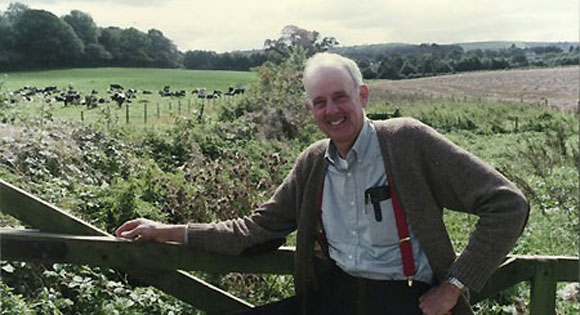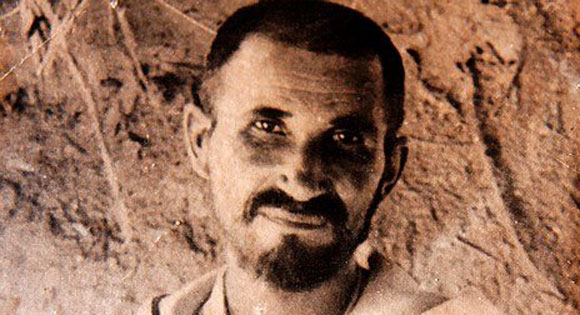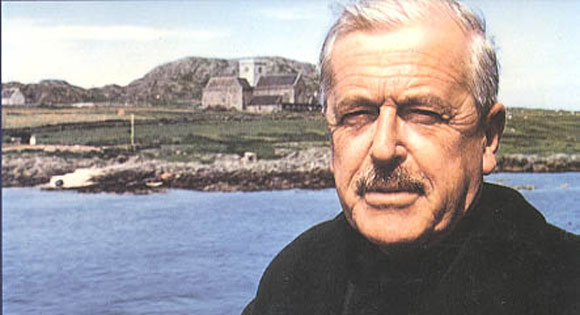Pioneers and Perfectors of Community
Going through the resources at Spirituality & Practice, we were happy to find books, "Naming the Days" profiles, and DVDs about those who have led the way and modeled the spiritual underpinnings of intentional communities.
- Swami Abhishiktananda went to India as a Benedictine monk and founded a contemplative community. In Swami Abhishiktananda: Essential Writings edited by Shirley Du Boulay, we learn how his attraction to Hinduism led him to adopt the lifestyle of an Indian holy man.

- Wendell Berry is a Kentucky poet, novelist, and farmer who advocates for living intentionally on the land. What Are People For? Essays brings together his writings on a life informed by a deep love of nature, place, small-scale economies, the dignity of work, community, and wise stewardship of the Earth.
- Dietrich Bonhoeffer was a German theologian who contributed a classic book on Christian community, Life Together: The Classic Exploration of Faith in Community. It has inspired Christians around the world with its devotional ardor, its Christ-centered emphasis, its ethical imperative of being our brother's keepers, and its celebration of the bounties of Christian fellowship. Bonhoeffer melds the practices of personal prayer, worship in common, work, and service to others. Other practices which are important to him are table fellowship, singing, intercession, Bible reading, and the confession of sin. The end result of all this is people of God who are committed to the ministry of listening, active helpfulness, and bearing with others. Bonhoeffer is a 90-minute documentary directed, produced, and narrated by Martin Doblmeier. Included in this survey of the theologian's life is his joining a group of pastors to establish an independent seminary at Finkenwalde based on study, mutual service and prayer. It has been seen as a model for committed Christian community.
- Brother Roger was the founder and prior of the Taize monastic community in France, which has become a favorite place for young adults to renew their Christian faith. Brother Roger of Taize: Essential Writings edited by Marvello Fidanzio collects his wisdom about community.
- Dorothy Day with her friend Peter Maurin launched the radical publication Catholic Worker in 1933. This project enabled her to harvest her passion for social justice, to write regularly, and to take care of her daughter from a failed marriage. Soon a community formed around Day and her mission of taking care of the poor, the hungry, and the homeless. Volunteers appeared to help sell the paper on the streets, picket and protest, and work in the movement's hospitality houses. Over the years, the Catholic Worker was involved with both the civil rights movement, efforts to unionize farm workers, and the peace movement.

- Charles de Foucauld founded the Little Brothers and Little Sisters of Jesus, intentional communities who vow to serve the poor and to witness to the love of God for all people. Charles de Foucauld: Writings Selected with an Introduction by Robert Ellsberg ponders the ministry of this Trappist monk whose writings reveal his ideal of embracing the spirit of Jesus' hidden life.
- Mohandas K. Gandhi left behind an incredible legacy for all humanity to ponder and put into practice: a simplified life, solidarity with the poor, the interplay between religion and politics, the humanizing practice of nonviolence, and a reverence for life. His vision of community that continues to inspire those who yearn to change themselves and mend the world.
- Bede Griffiths spent 25 years in a Benedictine monastery in England before venturing to India where he set up a Christian community following the customs of a Hindu ashram. Griffiths (1906-1994) was a pioneer of interspiritual awareness which was reflected in his community's practices.
- Clarence Jordan founded the Koinonia Farm in 1952 and the Fund for Humanity which later evolved into Habitat for Humanity. He believed that to be a Christian one had to walk the talk by serving the poor and refusing to participate in war. Clarence Jordan: Essential Writings, edited by Joyce Hollyday, charts the life and writings of this Baptist minister.
- Satish Kumar shows us in Path Without Destination: The Long Walk of a Gentle Hero that he is perfect pilgrim to accompany us on the journey that encompasses non-violence, peacemaking, and the "green" movement. The editor of Resurgence teaches us about the meaningful community of social change.

- George MacLeod founded the Iona Community in Scotland during the 1930s. He described it as a "thin place" where the invisible and the visible worlds touch and where epiphanies abound. Cave Refectory Road: Monastic Rhythms for Contemporary Living by Ian Adams takes a brief look at his life. A Thin Place: Iona and the Celtic Way, directed by Jim Friedrich, was shot on the island; Vivienne Hull and Danny Martin, who lead retreats to Iona, discuss some of the major aspects of Celtic spirituality. Among them are an emphasis upon the harmony among nature, the human community, and the unseen worlds; a reverence for earth; an honoring of the feminine; and an overall yearning to participate in the journey to wholeness.
- Thich Nhat Hanh is a Zen meditation master and pioneer practitioner of engaged Buddhism based on mindfulness, concentration, and insight. He and his students put his teachings into practice at Plum Village in France. In Good Citizens: Creating Enlightened Society, he describes the essentials of an ethical life.
- E. F. Schumacher advocated the use of small appropriate technologies over the traditional Western obsession with "bigger is better" in his classic book Small Is Beautiful: Economics as if People Mattered. Schumacher's attack on unbridled growth and the depletion of the earth's natural resources spoke to many people who were ready to commit themselves to a more spiritual way of living. Many intentional communities around the world adhere to the principles of smallness, simplicity, and peace.
- Zalman Schachter-Shalomi is the founder of the Jewish Renewal Movement. His memoir My Life in Jewish Renewal: A Memoir, written with Edward Hoffman, reveals his rich understanding of community as a crucial ingredient in the transformation of the world.
- Leo Tolstoy, the great Russian novelist, founded an intentional community. The film The Last Station, directed by Michael Hoffman, is set on this large country estate as Tolstoy in 1910 is taking stock of his life and his work. This drama, adapted from a novel by Jay Parini, contains a fascinating glimpse of Tolstoy's commune where its members do farm labor and try to live out his ideals of pacifism, social equality, celibacy, and simplicity.
- Jean Vanier founded the L'Arche communities to provide homes and programs for people with intellectual disabilities. From Brokenness to Community contains two lectures given at Harvard Divinity School where he writes about accepting imperfection and community as God's sign of transformation in the world.
